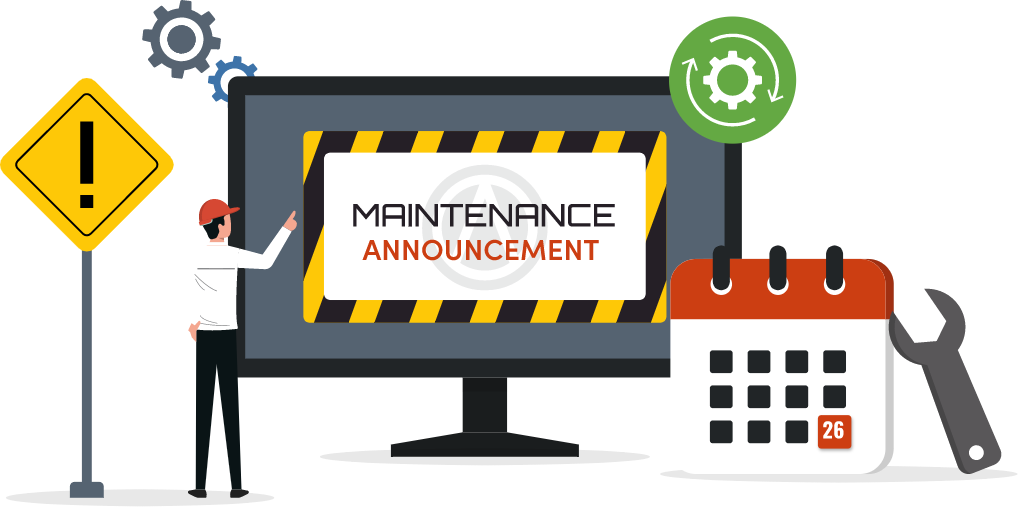What tools help with restaurant inventory management?
Tools that help with restaurant inventory management include digital inventory apps, POS-integrated systems, barcode scanners, and stock alerts. These tools improve accuracy, reduce waste, and save time by automating tracking, ordering, and reporting processes.
The Ultimate Inventory Management Checklist for Restaurant Owners
Overview
Running a restaurant is busy. Between serving guests, managing staff, and keeping the kitchen moving, it's easy to lose track of what's sitting on your shelves or in your walk-in. But ignoring your inventory can lead to problems - like running out of key ingredients, wasting food that goes bad, or spending more than you should on supplies.
That's where an inventory checklist helps. It gives you a step-by-step way to stay on top of what you have, what you need, and what's going to waste. Instead of guessing, you're working with facts. And the payoff is real - restaurants that manage their inventory regularly can cut food waste by up to 20%, which means saving money every single week.
Section One. Inventory Basics

Before you can manage your inventory well, you need to understand what you're keeping track of and why it matters. Inventory isn't just what's sitting in your fridge or pantry - it's every item you've bought with the intent to sell or use. That includes food and beverage items, condiments, paper products, cleaning supplies, to-go containers, and more.
There are two main types of inventory you'll deal with
1. Food and beverage inventory - This includes everything from meats, produce, sauces, and dry goods to beer, wine, and soda.
2. Non-food inventory - Think takeout packaging, napkins, paper towels, sanitizer, or cooking fuel. These may not go on a plate, but they're essential to running the kitchen.
Why is it so important to track this? Because inventory is directly tied to your restaurant's profits. If you don't know what you have, you might over-order, which leads to waste. Or you might under-order and run out during a rush. Either way, it costs you money.
Here's the reality - according to industry estimates, the average restaurant loses 4% to 10% of food purchases to waste - and much of that is due to poor inventory tracking. Even small improvements can add up. If your food costs are $10,000 a week, reducing waste by just 5% saves you $500. Over a year, that's $26,000.
Another key term to know is Cost of Goods Sold (COGS) - this is how much it costs you to make the food you sell. Keeping a close eye on your inventory helps you control your COGS, which is one of the biggest expenses in any restaurant.
Once you understand these basics, you can start building a routine to track, count, and control what's coming in and going out. That's where your checklist comes in.
Efficient Ordering at Your Fingertips
Experience Flawless Inventory Management with Altametrics
Section Two. Daily Inventory Tasks
Doing a full inventory every single day isn't realistic for most restaurants - but that doesn't mean you should ignore it between your weekly or monthly counts. Small, consistent checks done daily can help you stay ahead of problems before they turn into big ones.
Here are key tasks to include in your daily inventory checklist
1. Spot-Check Key Items
Focus on your top-selling or most expensive ingredients - like proteins, dairy, or specialty items. These often make up a large chunk of your food costs. By checking their levels daily, you'll know when to reorder and avoid surprise shortages.
2. Log Opening and Closing Counts (for Select Items)
If you use a lot of something - like burger buns, chicken, or fries - track how much you have at the start and end of the day. This helps you compare usage to sales and spot issues like over-portioning or theft.
3. Check Incoming Deliveries
Always inspect and record what comes in. Make sure what's delivered matches the invoice and that everything is fresh and undamaged. Taking just five minutes to double-check a delivery can prevent costly mistakes.
4. FIFO Check (First-In, First-Out)
Make sure your team is rotating stock. Older items should be moved to the front and used first. This helps reduce waste and ensures food safety.
5. Note Any Waste or Spoilage
Keep a simple log of anything that had to be tossed out - expired milk, dropped ingredients, spoiled produce. Over time, these notes help you adjust ordering and avoid repeated losses.
By doing these small tasks daily, you'll stay in control and reduce surprises. It only takes 10-15 minutes but can save you hours - and money - down the line.
Section Three. Weekly Inventory Tasks
While daily checks help you stay alert to small issues, a weekly inventory gives you the bigger picture. It helps you track trends, spot waste, and fine-tune your ordering habits. It's also the best way to stay on top of your Cost of Goods Sold (COGS) and make smart business decisions based on real numbers - not guesswork.
Here's what your weekly inventory checklist should include
1. Full Count of Key Inventory Items
Do a full count of your high-cost, high-volume items - like meats, cheeses, alcohol, and fresh produce. Use the same method each time (weight, count, or volume), and be consistent with who does it. This ensures your numbers stay accurate.
2. Review Sales vs. Usage
Compare what you sold during the week to what you used. If your POS says you sold 50 burgers, but you're down 70 patties, something's off. It could be over-portioning, spoilage, or theft. Weekly tracking helps you catch these red flags early.
3. Update Par Levels
Par levels are the ideal amount of each item you want to keep on hand. Adjust these weekly based on how busy you were. If you had leftovers, reduce your par. If you ran out, increase it.
4. Check Expiration Dates and Waste Logs
Look for products nearing expiration and move them to the front. Review any waste or spoilage noted during the week. Patterns here can guide future orders and prevent repeat losses.
Restaurants that consistently perform weekly inventory are up to two times more likely to keep food costs in line, according to industry studies. It's a habit that pays off.
Section Four. Monthly Inventory Checks

While daily and weekly tasks help you stay on track in the short term, monthly inventory checks are your opportunity to step back and see the full picture. This is where you dig into trends, assess performance, and make adjustments that impact your bottom line.
Here's what to include in your monthly inventory checklist
1. Complete Inventory Count
Once a month, conduct a full inventory count of everything - food, beverages, paper goods, cleaning supplies, and anything else your restaurant uses regularly. Use this opportunity to clean and reorganize storage areas, which helps improve accuracy and efficiency.
2. Calculate Inventory Turnover Rate
Your inventory turnover tells you how many times you've used and replaced your inventory during the month. The formula is -
Inventory Turnover = COGS / Average Inventory
A higher number means you're moving product quickly and efficiently. A lower number may suggest over-ordering or slow-moving items that tie up cash and risk spoilage.
3. Review Waste and Spoilage Reports
Look over your logs from the past month to identify trends. Are you consistently throwing out the same ingredients? Are certain items expiring before you use them? These clues help you adjust portion sizes, ordering habits, or prep schedules.
4. Evaluate Vendor Performance
Check if your suppliers delivered on time, with consistent quality. Late or poor deliveries can throw off your inventory cycle and increase waste. Make notes and consider changes if needed.
Doing a deep dive each month may take a bit more time, but it gives you valuable insights that daily and weekly tasks can't. It helps you make smarter choices, reduce costs, and keep your kitchen running smoothly month after month.
Streamline Your Inventory. Order Smartly.
Start Simplifying Your Orders with Altametrics
Section Five. Ordering and Receiving
Ordering and receiving inventory might seem routine, but it's one of the most important areas to manage carefully. Mistakes made here - like ordering too much, accepting spoiled goods, or failing to check invoices - can cost your restaurant real money.
Here's what to include in your ordering and receiving checklist
1. Order Based on Par Levels
Before placing an order, check your current stock and compare it to your par levels (the ideal quantity of each item you want on hand). This helps avoid over-ordering, which leads to spoilage, or under-ordering, which leads to stock-outs.
2. Use an Order Sheet or Template
Use the same order sheet every time to track what you've requested. Whether it's a printed form or a spreadsheet, consistency helps catch mistakes and makes it easier to compare your orders to deliveries.
3. Inspect All Deliveries
When a shipment arrives
- Check the quantity and item quality against the invoice.
- Reject items that are damaged, spoiled, or near their expiration date.
- Make sure cold items are stored immediately to stay within safe temperature ranges.
4. Label and Date Everything
Once accepted, every item should be labeled with the delivery date. Use permanent markers or pre-printed stickers. This helps your team follow FIFO (First In, First Out) and keeps your stock rotation in order.
5. Record and File Invoices
Keep a copy of each invoice, either digitally or on paper, and update your inventory records right away. This step helps reconcile purchases with actual usage and keeps your financial reports accurate.
Studies show that up to 25% of inventory loss happens during the receiving stage. A clear checklist and a few extra minutes of care can prevent costly errors and keep your inventory process running smoothly.
Section Six. Storage and Organization
How you store your inventory matters just as much as what you order. Poor organization leads to wasted food, misplaced items, and slower prep times. A clean, well-organized storage system not only saves money - it also keeps your staff efficient and health inspectors happy.
Here's what to include in your storage and organization checklist
1. Follow the FIFO Rule (First In, First Out)
Always rotate your stock. Move older items to the front and place new deliveries in the back. This simple habit helps prevent food from expiring before it's used and keeps ingredients fresh.
2. Label Everything
Every item that comes in should be labeled with the date it was received and, if opened, the date it was opened. Use waterproof labels or markers. This helps your team quickly identify what needs to be used first.
3. Separate by Category and Temperature
Keep your dry storage, refrigerated, and frozen items in clearly separated areas. Within each space, organize items by type (e.g., dairy, meat, produce) and avoid cross-contamination. For example, raw meats should always be stored below ready-to-eat foods.
4. Clean and Inspect Storage Areas Weekly
Schedule time each week to wipe down shelves, check for spills or leaks, and throw out expired products. A clean storage area keeps pests away and protects your food from contamination.
5. Use Clear Bins and Shelving
Transparent containers make it easy to see what's inside. Use bins or racks to avoid stacking boxes on the floor or each other - this makes counting faster and improves air circulation in coolers.
Poor storage can lead to up to 10% of food waste, often silently draining profits. A solid organization system helps prevent this, saving both time and money in the long run.
Section Seven. Tools and Templates
You don't need fancy software to stay on top of your inventory, but using the right tools can make the process faster, easier, and more accurate. Whether you prefer pen and paper or digital solutions, having templates and systems in place ensures consistency and helps reduce human error.
Here's what to consider including in your inventory management toolkit
1. Printable Inventory Checklists
Start with a simple printed form you can hang in your storage areas or keep on a clipboard. It should include -
- Item names grouped by storage location (dry, fridge, freezer)
- Units of measurement (cases, pounds, bottles, etc.)
- Spaces for starting count, deliveries, usage, and ending count
A basic form like this helps team members stay on the same page and makes training easier for new staff.
2. Spreadsheet Templates
Excel or Google Sheets are great free tools for tracking inventory. You can set up formulas to automatically calculate totals, track usage, and even flag low stock levels. These templates also make it easier to track inventory trends over time.
3. POS and Inventory Software Integration
If your restaurant uses a point-of-sale system with inventory features, take advantage of it. Many modern systems let you link sales data with stock counts, giving you real-time insights into usage and costs. Some platforms even alert you when items hit reorder levels.
4. Waste and Spoilage Logs
Use a simple logbook or digital form to record any items thrown out and why. This helps identify patterns and reduces waste over time.
Whether you use printed sheets or digital apps, the goal is the same- create an easy-to-follow system that keeps your inventory accurate and your kitchen running smoothly.
Put the Checklist to Work
Managing inventory doesn't have to be complicated - but it does need to be consistent. A simple checklist can help you stay organized, reduce waste, and keep your food costs under control. Whether you're tracking daily deliveries, doing weekly counts, or reviewing monthly reports, the key is having a reliable system you and your team can stick to.
Start small. Pick one area - like daily spot-checks or improving your storage setup - and build from there. Over time, these habits will become second nature. The more accurate your inventory, the easier it is to make smart decisions about ordering, pricing, and prep.
If you're ready to take your inventory management to the next level, consider using a digital tool that saves time and improves accuracy. Altametrics offers powerful, easy-to-use restaurant inventory software that helps you automate checklists, track usage in real-time, and control food costs with confidence.
From forecasting and vendor tracking to waste reduction and mobile-friendly tools, Altametrics gives you everything you need to streamline your inventory process - so you can spend less time counting and more time running your restaurant.
Learn more about how you can optimize your restaurant chain's inventory and order fulfillment by clicking "Request a Demo" below.
Transform Your Restaurant Operations Now!
Effortless Inventory Tracking with Altametrics!
Must-Read Content

How to Calculate Inventory Turnover for Your Restaurant

How to Improve Order Fulfillment in Multi-Location Restaurant Chains

Inventory Costing Methods Explained for Restaurants

Tech Tools to Help You Control Inventory in Your Restaurant Effortlessly










